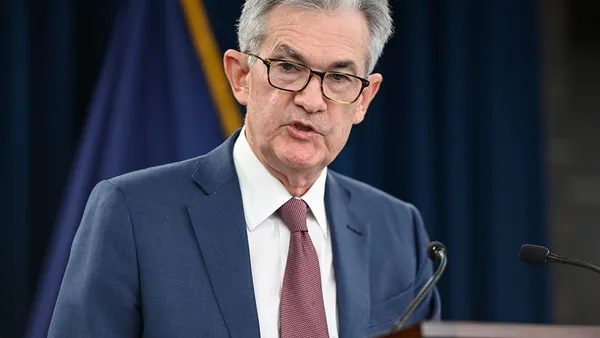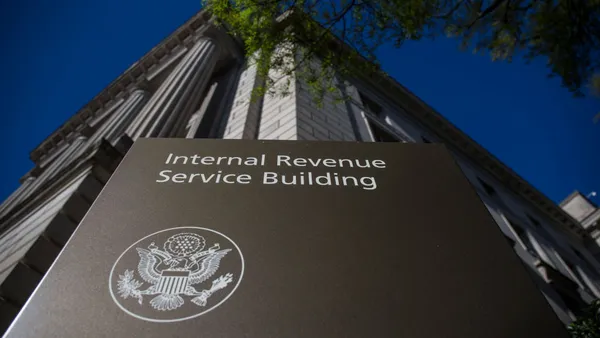Dive Brief:
- Most business economists believe Federal Reserve policy is “too stimulative,” with the proportion holding that view doubling to 52% compared with 26% in March, according to an Aug. 2-10 survey of 227 panelists by the National Association for Business Economics (NABE).
- The share of NABE panelists who believe monetary policy is “about right” plunged to 47% from 72% in March, the association said.
-
“More than half of respondents believe that inflation risks are to the upside,” with 74% saying the Fed should increase the benchmark interest rate by the end of next year, according to Ilan Kolet, institutional portfolio manager at Fidelity investments and NABE policy survey chair. Sixty-five percent of the economists believe the central bank will eventually achieve its goal of 2% average inflation.
Dive Insight:
Concern about rising prices have flared since the spring, fueled by an increase in key measures of inflation. The Fed’s preferred gauge of inflation — the core personal consumption expenditures price index — rose 3.5% in June compared with a year earlier, a 30-year high and well above the central bank’s 2% target.
The Fed has indicated it would begin to reduce record accommodation by paring its $120 billion in monthly purchases of Treasury and mortgage bonds. The so-called “quantitative easing” increases demand for the securities, pulling down borrowing costs.
Most Fed officials said at a meeting last month that starting to taper bond buying this year “could be appropriate,” according to minutes from the July 27-28 gathering. Fifty-two percent of the NABE panelists predicted the Fed will begin reductions this year.
The Fed has committed to purchasing securities and holding the benchmark interest rate at a record low until unemployment and inflation align closer to its goals. Employment is about 7 million below its pre-pandemic level.
Central bank officials will likely discuss the pace of bond buying — and the level of overall accommodation — in a virtual meeting hosted by the Kansas City Fed on Friday.
Fed officials face sharp scrutiny of their approach toward inflation as they approach the first anniversary of a decision to allow annual price gains to exceed 2% to make up for years of undershooting that goal. They also face a shift in the balance of risks to the economic outlook.
Supply chain bottlenecks, record monetary and fiscal stimulus, pandemic-induced labor shortages, strong post-lockdown economic growth and a rebound in consumer spending have pushed up prices. In recent weeks, however, the spread of the delta variant has slowed growth and cast doubt on the future level of demand.
Fed Chairman Jerome Powell has said that the inflationary surge is transitory and that price gains will ease as supplies of key goods recover.
Many business economists are apparently more alarmed about inflation than Powell, with 49% saying the Fed should not wait to reduce stimulus, the NABE said. Forty-seven percent said no action is needed.
Twenty-nine percent of business economists said the central bank should raise the federal funds rate — now at zero to 0.25% — sometime this year, while 45% favor an increase in 2022. Twenty percent said the Fed should wait until 2023, NABE said.
The central bank may try to curb prices too late because of its view that accelerating inflation is transitory, the Congressional Research Service (CRS) recently said.
“The Fed may be correct in its assessment today that higher inflation will not persist, but if it is wrong, it might not realize until it is too late and higher inflation has become embedded in people’s expectations,” the CRS said in a report. “In that case, it could be costly to the economy to get the ‘inflation genie back in the bottle.’”














